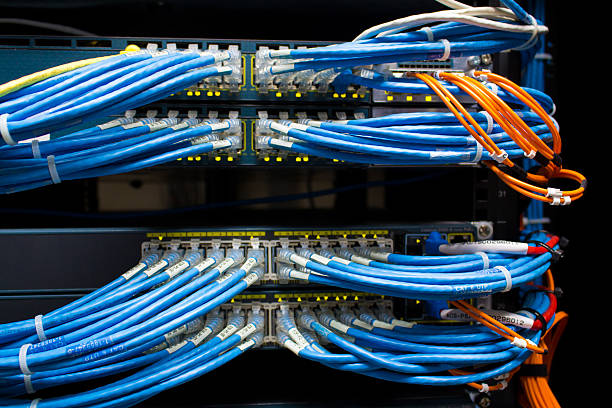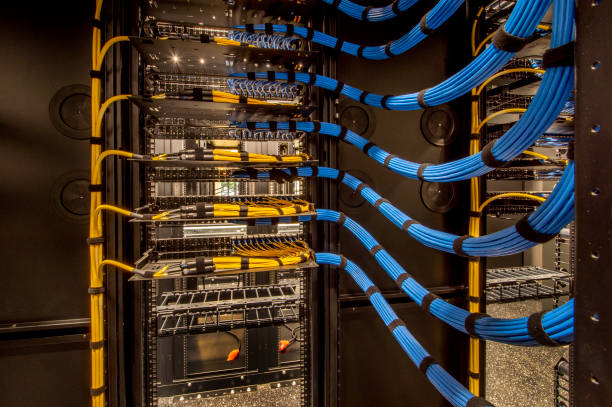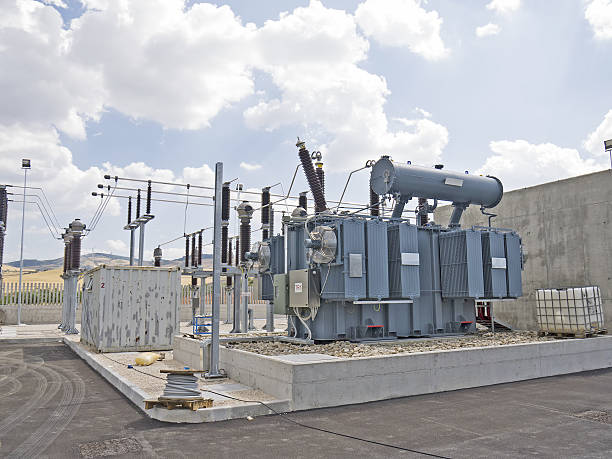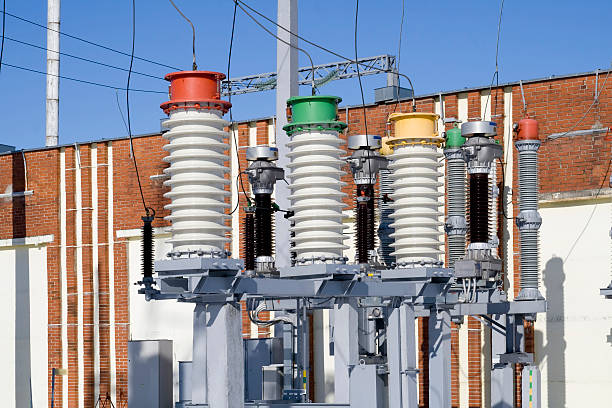Optimal monitoring with unique fire alarm (fire detection and early warning)
Cable tray and transformer temperature monitoring
Distributed Fiber Optic Temperature Sensing (DTS) technology plays a significant role in temperature monitoring of cable trays and transformers. Cable trays are used for supporting and protecting power cables, while transformers play a crucial role in energy conversion and distribution within the power system. In both these applications, temperature variations can lead to equipment overheating, aging, malfunctions, and even fire hazards. Therefore, real-time temperature monitoring and early warning systems are essential for ensuring safe and reliable operation.

Regarding cable trays, they bear the weight of power cables and are exposed to external environmental factors such as temperature, humidity, and vibrations. Elevated temperatures can lead to cable overload or insulation aging, which may result in cable faults. Through distributed fiber optic temperature sensing technology, fiber optic sensors can be installed along the cable trays to monitor temperature changes in real-time. This enables early detection of temperature anomalies, allowing for timely maintenance and repair actions to ensure the safe operation of the power system.

Regarding transformers, they generate heat during operation, and elevated temperatures can lead to transformer overload, insulation aging, damage, or even fire hazards. Distributed fiber optic temperature sensing technology can be utilized to deploy fiber optic sensors inside and outside the transformer for real-time temperature monitoring. Monitoring and early warning of temperature anomalies can help maintenance personnel promptly identify potential issues and take appropriate repair and maintenance measures to ensure the safe operation and prolong the lifespan of the transformer.
Distributed fiber optic temperature sensing technology plays a crucial role in monitoring cable trays and transformers, enabling real-time temperature monitoring and providing early warnings to ensure the safe operation of the power system. This technology offers advantages such as high sensitivity, real-time monitoring, and remote monitoring, providing a reliable solution for the maintenance and management of cable trays and transformers.
Solution:
Cable Tray Monitoring
Fiber Optic Installation: Install distributed fiber optic sensors on the cable tray, ensuring close contact between the fiber optic and the cable tray. Distribute the fiber optic sensors along the length of the cable tray to continuously monitor the temperature changes on the surface or in the surrounding environment of the cable tray.

Suspension Installation: Mount the fiber optic sensors in a suspended manner on the cable tray, ensuring close contact between the fiber optic and the tray's surface. This installation method is suitable for straight sections of the cable tray. The fiber optic can be secured on the side or top of the tray and distributed along its length to monitor the temperature.

Cable Suspension Installation: Thread the fiber optic sensors through the holes or ropes in the cable tray, ensuring contact between the fiber optic and the interior of the tray or the surrounding environment. This installation method is suitable for curved sections or complex structures of the cable tray. By threading the fiber optic through the tray's holes or ropes, the fiber can be secured inside the tray to monitor the temperature.
Real-time Monitoring: By using distributed fiber optic temperature sensing technology, the temperature changes in the cable tray can be monitored in real-time. The fiber optic sensors capture temperature data and transmit it to the monitoring system for real-time analysis and recording. The monitoring system can provide temperature trend charts and alarm functionality, allowing maintenance personnel to promptly detect temperature anomalies.
Temperature Warning and Alarm: By setting predefined temperature thresholds, the monitoring system will issue an alarm when the temperature in the cable tray exceeds the threshold. This enables timely notification to maintenance personnel to take appropriate repair measures and prevent cable tray failures caused by overheating.
Transformer Monitoring
Fiber Optic Installation: Distributed fiber optic sensors are installed both internally and externally in the transformer. The fiber optic comes into contact with the surface of the transformer or the surrounding environment to sense temperature changes. The positioning of the fiber optic sensors should cover critical areas of the transformer, such as windings, oil tanks, cooling devices, etc.

Surface Attachment Installation: The fiber optic sensors are attached to the external surface of the transformer, allowing the fiber optic to come into contact with the surface of the transformer. This installation method is suitable for monitoring the temperature of the transformer's outer casing. The fiber optic is fixed to the transformer's surface using adhesive or mounting fixtures.

Internal Pass-through Installation: The fiber optic sensors are threaded through the transformer's windings, oil tank, or other internal components, allowing the fiber optic to come into contact with the temperature environment inside the transformer. This installation method is suitable for monitoring the internal temperature of the transformer. The fiber optic is fixed inside the transformer by threading it through holes in the windings or oil tank to achieve temperature monitoring.
Real-time monitoring: Using distributed fiber optic temperature sensing technology, the temperature changes of the cable tray or transformer connected to the fiber optic sensors can be monitored in real-time. The fiber optic sensors sample temperature data with millimeter-level resolution, and the changes in the optical signals in the fiber optic reflect the temperature distribution inside and outside the transformer.
Temperature warning and anomaly alarm: Based on the operational requirements and preset temperature thresholds, the monitoring system can continuously monitor the temperature of the transformer and trigger temperature warnings and anomaly alarms when the temperature exceeds the thresholds. This allows timely notification to maintenance personnel for further inspection and maintenance.
During the fiber optic installation process, the following considerations should be taken into account:
Ensure close contact between the fiber optic and the monitored object (cable tray or transformer) to achieve accurate temperature sensing.
Select the appropriate type of fiber optic sensor for the monitored environment, such as single-mode or multi-mode fiber.
Pay attention to the protection and fixation of the fiber optic to prevent damage or displacement.
Consider the length and density of the fiber optic installation to ensure sufficient coverage of the monitoring area.
When installing the fiber optic, suitable installation methods and fixation techniques can be chosen based on specific requirements to meet the temperature monitoring needs of the cable tray and transformer. It is recommended to follow relevant safety protocols and operating guidelines to ensure the safety and reliability of the installation process.
Distributed fiber optic temperature sensing technology provides real-time temperature monitoring and warning capabilities for cable trays and transformers. By promptly detecting temperature anomalies, maintenance personnel can take appropriate measures to ensure the safe operation and prolong the lifespan of the cable trays and transformers. This technology offers high accuracy, real-time monitoring, and remote monitoring advantages, making it suitable for various scales and types of cable tray and transformer monitoring needs.





